-
EXECUTIVE SUMMARY
-
Market Overview
-
Key Findings
-
Market Segmentation
-
Competitive Landscape
-
Challenges and Opportunities
-
Future Outlook
-
MARKET INTRODUCTION
-
Definition
-
Scope of the study
- Research Objective
- Assumption
- Limitations
-
RESEARCH METHODOLOGY
-
Overview
-
Data Mining
-
Secondary Research
-
Primary Research
- Primary Interviews and Information Gathering Process
- Breakdown of Primary Respondents
-
Forecasting Model
-
Market Size Estimation
- Bottom-Up Approach
- Top-Down Approach
-
Data Triangulation
-
Validation
-
MARKET DYNAMICS
-
Overview
-
Drivers
-
Restraints
-
Opportunities
-
MARKET FACTOR ANALYSIS
-
Value chain Analysis
-
Porter's Five Forces Analysis
- Bargaining Power of Suppliers
- Bargaining Power of Buyers
- Threat of New Entrants
- Threat of Substitutes
- Intensity of Rivalry
-
COVID-19 Impact Analysis
- Market Impact Analysis
- Regional Impact
- Opportunity and Threat Analysis
-
HEALTHCARE ELECTRONIC DATA INTERCHANGE (EDI) MARKET, BY APPLICATION (USD BILLION)
-
Claims Management
-
Payment Remittance
-
Order Processing
-
Eligibility Verification
-
HEALTHCARE ELECTRONIC DATA INTERCHANGE (EDI) MARKET, BY END USE (USD BILLION)
-
Healthcare Providers
-
Insurance Payers
-
Pharmaceutical Companies
-
Billing Services
-
HEALTHCARE ELECTRONIC DATA INTERCHANGE (EDI) MARKET, BY DEPLOYMENT TYPE (USD BILLION)
-
On-Premises
-
Cloud-Based
-
Hybrid
-
HEALTHCARE ELECTRONIC DATA INTERCHANGE (EDI) MARKET, BY TRANSACTION TYPE (USD BILLION)
-
Electronic Claims Submission
-
Electronic Remittance Advice
-
Patient Information Requests
-
HEALTHCARE ELECTRONIC DATA INTERCHANGE (EDI) MARKET, BY REGIONAL (USD BILLION)
-
North America
- US
- Canada
-
Europe
- Germany
- UK
- France
- Russia
- Italy
- Spain
- Rest of Europe
-
APAC
- China
- India
- Japan
- South Korea
- Malaysia
- Thailand
- Indonesia
- Rest of APAC
-
South America
- Brazil
- Mexico
- Argentina
- Rest of South America
-
MEA
- GCC Countries
- South Africa
- Rest of MEA
-
COMPETITIVE LANDSCAPE
-
Overview
-
Competitive Analysis
-
Market share Analysis
-
Major Growth Strategy in the Healthcare Electronic Data Interchange (EDI) Market
-
Competitive Benchmarking
-
Leading Players in Terms of Number of Developments in the Healthcare Electronic Data Interchange (EDI) Market
-
Key developments and growth strategies
- New Product Launch/Service Deployment
- Merger & Acquisitions
- Joint Ventures
-
Major Players Financial Matrix
- Sales and Operating Income
- Major Players R&D Expenditure. 2023
-
COMPANY PROFILES
-
Change Healthcare
- Financial Overview
- Products Offered
- Key Developments
- SWOT Analysis
- Key Strategies
-
athenahealth
- Financial Overview
- Products Offered
- Key Developments
- SWOT Analysis
- Key Strategies
-
GE Healthcare
- Financial Overview
- Products Offered
- Key Developments
- SWOT Analysis
- Key Strategies
-
McKesson
- Financial Overview
- Products Offered
- Key Developments
- SWOT Analysis
- Key Strategies
-
Allscripts Healthcare Solutions
- Financial Overview
- Products Offered
- Key Developments
- SWOT Analysis
- Key Strategies
-
Epic Systems
- Financial Overview
- Products Offered
- Key Developments
- SWOT Analysis
- Key Strategies
-
Kareo
- Financial Overview
- Products Offered
- Key Developments
- SWOT Analysis
- Key Strategies
-
VerityStream
- Financial Overview
- Products Offered
- Key Developments
- SWOT Analysis
- Key Strategies
-
eClinicalWorks
- Financial Overview
- Products Offered
- Key Developments
- SWOT Analysis
- Key Strategies
-
Optum
- Financial Overview
- Products Offered
- Key Developments
- SWOT Analysis
- Key Strategies
-
TPG Capital
- Financial Overview
- Products Offered
- Key Developments
- SWOT Analysis
- Key Strategies
-
HITRUST
- Financial Overview
- Products Offered
- Key Developments
- SWOT Analysis
- Key Strategies
-
NextGen Healthcare
- Financial Overview
- Products Offered
- Key Developments
- SWOT Analysis
- Key Strategies
-
Visionary Healthcare
- Financial Overview
- Products Offered
- Key Developments
- SWOT Analysis
- Key Strategies
-
Cerner
- Financial Overview
- Products Offered
- Key Developments
- SWOT Analysis
- Key Strategies
-
APPENDIX
-
References
-
Related Reports LIST OF TABLES
-
TABLE
-
LIST OF ASSUMPTIONS
-
TABLE
-
NORTH AMERICA HEALTHCARE ELECTRONIC DATA INTERCHANGE (EDI) MARKET SIZE ESTIMATES & FORECAST, BY APPLICATION, 2019-2032 (USD BILLIONS)
-
TABLE
-
NORTH AMERICA HEALTHCARE ELECTRONIC DATA INTERCHANGE (EDI) MARKET SIZE ESTIMATES & FORECAST, BY END USE, 2019-2032 (USD BILLIONS)
-
TABLE
-
NORTH AMERICA HEALTHCARE ELECTRONIC DATA INTERCHANGE (EDI) MARKET SIZE ESTIMATES & FORECAST, BY DEPLOYMENT TYPE, 2019-2032 (USD BILLIONS)
-
TABLE
-
NORTH AMERICA HEALTHCARE ELECTRONIC DATA INTERCHANGE (EDI) MARKET SIZE ESTIMATES & FORECAST, BY TRANSACTION TYPE, 2019-2032 (USD BILLIONS)
-
TABLE
-
NORTH AMERICA HEALTHCARE ELECTRONIC DATA INTERCHANGE (EDI) MARKET SIZE ESTIMATES & FORECAST, BY REGIONAL, 2019-2032 (USD BILLIONS)
-
TABLE
-
US HEALTHCARE ELECTRONIC DATA INTERCHANGE (EDI) MARKET SIZE ESTIMATES & FORECAST, BY APPLICATION, 2019-2032 (USD BILLIONS)
-
TABLE
-
US HEALTHCARE ELECTRONIC DATA INTERCHANGE (EDI) MARKET SIZE ESTIMATES & FORECAST, BY END USE, 2019-2032 (USD BILLIONS)
-
TABLE
-
US HEALTHCARE ELECTRONIC DATA INTERCHANGE (EDI) MARKET SIZE ESTIMATES & FORECAST, BY DEPLOYMENT TYPE, 2019-2032 (USD BILLIONS)
-
TABLE
-
US HEALTHCARE ELECTRONIC DATA INTERCHANGE (EDI) MARKET SIZE ESTIMATES & FORECAST, BY TRANSACTION TYPE, 2019-2032 (USD BILLIONS)
-
TABLE
-
US HEALTHCARE ELECTRONIC DATA INTERCHANGE (EDI) MARKET SIZE ESTIMATES & FORECAST, BY REGIONAL, 2019-2032 (USD BILLIONS)
-
TABLE
-
CANADA HEALTHCARE ELECTRONIC DATA INTERCHANGE (EDI) MARKET SIZE ESTIMATES & FORECAST, BY APPLICATION, 2019-2032 (USD BILLIONS)
-
TABLE
-
CANADA HEALTHCARE ELECTRONIC DATA INTERCHANGE (EDI) MARKET SIZE ESTIMATES & FORECAST, BY END USE, 2019-2032 (USD BILLIONS)
-
TABLE
-
CANADA HEALTHCARE ELECTRONIC DATA INTERCHANGE (EDI) MARKET SIZE ESTIMATES & FORECAST, BY DEPLOYMENT TYPE, 2019-2032 (USD BILLIONS)
-
TABLE
-
CANADA HEALTHCARE ELECTRONIC DATA INTERCHANGE (EDI) MARKET SIZE ESTIMATES & FORECAST, BY TRANSACTION TYPE, 2019-2032 (USD BILLIONS)
-
TABLE
-
CANADA HEALTHCARE ELECTRONIC DATA INTERCHANGE (EDI) MARKET SIZE ESTIMATES & FORECAST, BY REGIONAL, 2019-2032 (USD BILLIONS)
-
TABLE
-
EUROPE HEALTHCARE ELECTRONIC DATA INTERCHANGE (EDI) MARKET SIZE ESTIMATES & FORECAST, BY APPLICATION, 2019-2032 (USD BILLIONS)
-
TABLE
-
EUROPE HEALTHCARE ELECTRONIC DATA INTERCHANGE (EDI) MARKET SIZE ESTIMATES & FORECAST, BY END USE, 2019-2032 (USD BILLIONS)
-
TABLE
-
EUROPE HEALTHCARE ELECTRONIC DATA INTERCHANGE (EDI) MARKET SIZE ESTIMATES & FORECAST, BY DEPLOYMENT TYPE, 2019-2032 (USD BILLIONS)
-
TABLE
-
EUROPE HEALTHCARE ELECTRONIC DATA INTERCHANGE (EDI) MARKET SIZE ESTIMATES & FORECAST, BY TRANSACTION TYPE, 2019-2032 (USD BILLIONS)
-
TABLE
-
EUROPE HEALTHCARE ELECTRONIC DATA INTERCHANGE (EDI) MARKET SIZE ESTIMATES & FORECAST, BY REGIONAL, 2019-2032 (USD BILLIONS)
-
TABLE
-
GERMANY HEALTHCARE ELECTRONIC DATA INTERCHANGE (EDI) MARKET SIZE ESTIMATES & FORECAST, BY APPLICATION, 2019-2032 (USD BILLIONS)
-
TABLE
-
GERMANY HEALTHCARE ELECTRONIC DATA INTERCHANGE (EDI) MARKET SIZE ESTIMATES & FORECAST, BY END USE, 2019-2032 (USD BILLIONS)
-
TABLE
-
GERMANY HEALTHCARE ELECTRONIC DATA INTERCHANGE (EDI) MARKET SIZE ESTIMATES & FORECAST, BY DEPLOYMENT TYPE, 2019-2032 (USD BILLIONS)
-
TABLE
-
GERMANY HEALTHCARE ELECTRONIC DATA INTERCHANGE (EDI) MARKET SIZE ESTIMATES & FORECAST, BY TRANSACTION TYPE, 2019-2032 (USD BILLIONS)
-
TABLE
-
GERMANY HEALTHCARE ELECTRONIC DATA INTERCHANGE (EDI) MARKET SIZE ESTIMATES & FORECAST, BY REGIONAL, 2019-2032 (USD BILLIONS)
-
TABLE
-
UK HEALTHCARE ELECTRONIC DATA INTERCHANGE (EDI) MARKET SIZE ESTIMATES & FORECAST, BY APPLICATION, 2019-2032 (USD BILLIONS)
-
TABLE
-
UK HEALTHCARE ELECTRONIC DATA INTERCHANGE (EDI) MARKET SIZE ESTIMATES & FORECAST, BY END USE, 2019-2032 (USD BILLIONS)
-
TABLE
-
UK HEALTHCARE ELECTRONIC DATA INTERCHANGE (EDI) MARKET SIZE ESTIMATES & FORECAST, BY DEPLOYMENT TYPE, 2019-2032 (USD BILLIONS)
-
TABLE
-
UK HEALTHCARE ELECTRONIC DATA INTERCHANGE (EDI) MARKET SIZE ESTIMATES & FORECAST, BY TRANSACTION TYPE, 2019-2032 (USD BILLIONS)
-
TABLE
-
UK HEALTHCARE ELECTRONIC DATA INTERCHANGE (EDI) MARKET SIZE ESTIMATES & FORECAST, BY REGIONAL, 2019-2032 (USD BILLIONS)
-
TABLE
-
FRANCE HEALTHCARE ELECTRONIC DATA INTERCHANGE (EDI) MARKET SIZE ESTIMATES & FORECAST, BY APPLICATION, 2019-2032 (USD BILLIONS)
-
TABLE
-
FRANCE HEALTHCARE ELECTRONIC DATA INTERCHANGE (EDI) MARKET SIZE ESTIMATES & FORECAST, BY END USE, 2019-2032 (USD BILLIONS)
-
TABLE
-
FRANCE HEALTHCARE ELECTRONIC DATA INTERCHANGE (EDI) MARKET SIZE ESTIMATES & FORECAST, BY DEPLOYMENT TYPE, 2019-2032 (USD BILLIONS)
-
TABLE
-
FRANCE HEALTHCARE ELECTRONIC DATA INTERCHANGE (EDI) MARKET SIZE ESTIMATES & FORECAST, BY TRANSACTION TYPE, 2019-2032 (USD BILLIONS)
-
TABLE
-
FRANCE HEALTHCARE ELECTRONIC DATA INTERCHANGE (EDI) MARKET SIZE ESTIMATES & FORECAST, BY REGIONAL, 2019-2032 (USD BILLIONS)
-
TABLE
-
RUSSIA HEALTHCARE ELECTRONIC DATA INTERCHANGE (EDI) MARKET SIZE ESTIMATES & FORECAST, BY APPLICATION, 2019-2032 (USD BILLIONS)
-
TABLE
-
RUSSIA HEALTHCARE ELECTRONIC DATA INTERCHANGE (EDI) MARKET SIZE ESTIMATES & FORECAST, BY END USE, 2019-2032 (USD BILLIONS)
-
TABLE
-
RUSSIA HEALTHCARE ELECTRONIC DATA INTERCHANGE (EDI) MARKET SIZE ESTIMATES & FORECAST, BY DEPLOYMENT TYPE, 2019-2032 (USD BILLIONS)
-
TABLE
-
RUSSIA HEALTHCARE ELECTRONIC DATA INTERCHANGE (EDI) MARKET SIZE ESTIMATES & FORECAST, BY TRANSACTION TYPE, 2019-2032 (USD BILLIONS)
-
TABLE
-
RUSSIA HEALTHCARE ELECTRONIC DATA INTERCHANGE (EDI) MARKET SIZE ESTIMATES & FORECAST, BY REGIONAL, 2019-2032 (USD BILLIONS)
-
TABLE
-
ITALY HEALTHCARE ELECTRONIC DATA INTERCHANGE (EDI) MARKET SIZE ESTIMATES & FORECAST, BY APPLICATION, 2019-2032 (USD BILLIONS)
-
TABLE
-
ITALY HEALTHCARE ELECTRONIC DATA INTERCHANGE (EDI) MARKET SIZE ESTIMATES & FORECAST, BY END USE, 2019-2032 (USD BILLIONS)
-
TABLE
-
ITALY HEALTHCARE ELECTRONIC DATA INTERCHANGE (EDI) MARKET SIZE ESTIMATES & FORECAST, BY DEPLOYMENT TYPE, 2019-2032 (USD BILLIONS)
-
TABLE
-
ITALY HEALTHCARE ELECTRONIC DATA INTERCHANGE (EDI) MARKET SIZE ESTIMATES & FORECAST, BY TRANSACTION TYPE, 2019-2032 (USD BILLIONS)
-
TABLE
-
ITALY HEALTHCARE ELECTRONIC DATA INTERCHANGE (EDI) MARKET SIZE ESTIMATES & FORECAST, BY REGIONAL, 2019-2032 (USD BILLIONS)
-
TABLE
-
SPAIN HEALTHCARE ELECTRONIC DATA INTERCHANGE (EDI) MARKET SIZE ESTIMATES & FORECAST, BY APPLICATION, 2019-2032 (USD BILLIONS)
-
TABLE
-
SPAIN HEALTHCARE ELECTRONIC DATA INTERCHANGE (EDI) MARKET SIZE ESTIMATES & FORECAST, BY END USE, 2019-2032 (USD BILLIONS)
-
TABLE
-
SPAIN HEALTHCARE ELECTRONIC DATA INTERCHANGE (EDI) MARKET SIZE ESTIMATES & FORECAST, BY DEPLOYMENT TYPE, 2019-2032 (USD BILLIONS)
-
TABLE
-
SPAIN HEALTHCARE ELECTRONIC DATA INTERCHANGE (EDI) MARKET SIZE ESTIMATES & FORECAST, BY TRANSACTION TYPE, 2019-2032 (USD BILLIONS)
-
TABLE
-
SPAIN HEALTHCARE ELECTRONIC DATA INTERCHANGE (EDI) MARKET SIZE ESTIMATES & FORECAST, BY REGIONAL, 2019-2032 (USD BILLIONS)
-
TABLE
-
REST OF EUROPE HEALTHCARE ELECTRONIC DATA INTERCHANGE (EDI) MARKET SIZE ESTIMATES & FORECAST, BY APPLICATION, 2019-2032 (USD BILLIONS)
-
TABLE
-
REST OF EUROPE HEALTHCARE ELECTRONIC DATA INTERCHANGE (EDI) MARKET SIZE ESTIMATES & FORECAST, BY END USE, 2019-2032 (USD BILLIONS)
-
TABLE
-
REST OF EUROPE HEALTHCARE ELECTRONIC DATA INTERCHANGE (EDI) MARKET SIZE ESTIMATES & FORECAST, BY DEPLOYMENT TYPE, 2019-2032 (USD BILLIONS)
-
TABLE
-
REST OF EUROPE HEALTHCARE ELECTRONIC DATA INTERCHANGE (EDI) MARKET SIZE ESTIMATES & FORECAST, BY TRANSACTION TYPE, 2019-2032 (USD BILLIONS)
-
TABLE
-
REST OF EUROPE HEALTHCARE ELECTRONIC DATA INTERCHANGE (EDI) MARKET SIZE ESTIMATES & FORECAST, BY REGIONAL, 2019-2032 (USD BILLIONS)
-
TABLE
-
APAC HEALTHCARE ELECTRONIC DATA INTERCHANGE (EDI) MARKET SIZE ESTIMATES & FORECAST, BY APPLICATION, 2019-2032 (USD BILLIONS)
-
TABLE
-
APAC HEALTHCARE ELECTRONIC DATA INTERCHANGE (EDI) MARKET SIZE ESTIMATES & FORECAST, BY END USE, 2019-2032 (USD BILLIONS)
-
TABLE
-
APAC HEALTHCARE ELECTRONIC DATA INTERCHANGE (EDI) MARKET SIZE ESTIMATES & FORECAST, BY DEPLOYMENT TYPE, 2019-2032 (USD BILLIONS)
-
TABLE
-
APAC HEALTHCARE ELECTRONIC DATA INTERCHANGE (EDI) MARKET SIZE ESTIMATES & FORECAST, BY TRANSACTION TYPE, 2019-2032 (USD BILLIONS)
-
TABLE
-
APAC HEALTHCARE ELECTRONIC DATA INTERCHANGE (EDI) MARKET SIZE ESTIMATES & FORECAST, BY REGIONAL, 2019-2032 (USD BILLIONS)
-
TABLE
-
CHINA HEALTHCARE ELECTRONIC DATA INTERCHANGE (EDI) MARKET SIZE ESTIMATES & FORECAST, BY APPLICATION, 2019-2032 (USD BILLIONS)
-
TABLE
-
CHINA HEALTHCARE ELECTRONIC DATA INTERCHANGE (EDI) MARKET SIZE ESTIMATES & FORECAST, BY END USE, 2019-2032 (USD BILLIONS)
-
TABLE
-
CHINA HEALTHCARE ELECTRONIC DATA INTERCHANGE (EDI) MARKET SIZE ESTIMATES & FORECAST, BY DEPLOYMENT TYPE, 2019-2032 (USD BILLIONS)
-
TABLE
-
CHINA HEALTHCARE ELECTRONIC DATA INTERCHANGE (EDI) MARKET SIZE ESTIMATES & FORECAST, BY TRANSACTION TYPE, 2019-2032 (USD BILLIONS)
-
TABLE
-
CHINA HEALTHCARE ELECTRONIC DATA INTERCHANGE (EDI) MARKET SIZE ESTIMATES & FORECAST, BY REGIONAL, 2019-2032 (USD BILLIONS)
-
TABLE
-
INDIA HEALTHCARE ELECTRONIC DATA INTERCHANGE (EDI) MARKET SIZE ESTIMATES & FORECAST, BY APPLICATION, 2019-2032 (USD BILLIONS)
-
TABLE
-
INDIA HEALTHCARE ELECTRONIC DATA INTERCHANGE (EDI) MARKET SIZE ESTIMATES & FORECAST, BY END USE, 2019-2032 (USD BILLIONS)
-
TABLE
-
INDIA HEALTHCARE ELECTRONIC DATA INTERCHANGE (EDI) MARKET SIZE ESTIMATES & FORECAST, BY DEPLOYMENT TYPE, 2019-2032 (USD BILLIONS)
-
TABLE
-
INDIA HEALTHCARE ELECTRONIC DATA INTERCHANGE (EDI) MARKET SIZE ESTIMATES & FORECAST, BY TRANSACTION TYPE, 2019-2032 (USD BILLIONS)
-
TABLE
-
INDIA HEALTHCARE ELECTRONIC DATA INTERCHANGE (EDI) MARKET SIZE ESTIMATES & FORECAST, BY REGIONAL, 2019-2032 (USD BILLIONS)
-
TABLE
-
JAPAN HEALTHCARE ELECTRONIC DATA INTERCHANGE (EDI) MARKET SIZE ESTIMATES & FORECAST, BY APPLICATION, 2019-2032 (USD BILLIONS)
-
TABLE
-
JAPAN HEALTHCARE ELECTRONIC DATA INTERCHANGE (EDI) MARKET SIZE ESTIMATES & FORECAST, BY END USE, 2019-2032 (USD BILLIONS)
-
TABLE
-
JAPAN HEALTHCARE ELECTRONIC DATA INTERCHANGE (EDI) MARKET SIZE ESTIMATES & FORECAST, BY DEPLOYMENT TYPE, 2019-2032 (USD BILLIONS)
-
TABLE
-
JAPAN HEALTHCARE ELECTRONIC DATA INTERCHANGE (EDI) MARKET SIZE ESTIMATES & FORECAST, BY TRANSACTION TYPE, 2019-2032 (USD BILLIONS)
-
TABLE
-
JAPAN HEALTHCARE ELECTRONIC DATA INTERCHANGE (EDI) MARKET SIZE ESTIMATES & FORECAST, BY REGIONAL, 2019-2032 (USD BILLIONS)
-
TABLE
-
SOUTH KOREA HEALTHCARE ELECTRONIC DATA INTERCHANGE (EDI) MARKET SIZE ESTIMATES & FORECAST, BY APPLICATION, 2019-2032 (USD BILLIONS)
-
TABLE
-
SOUTH KOREA HEALTHCARE ELECTRONIC DATA INTERCHANGE (EDI) MARKET SIZE ESTIMATES & FORECAST, BY END USE, 2019-2032 (USD BILLIONS)
-
TABLE
-
SOUTH KOREA HEALTHCARE ELECTRONIC DATA INTERCHANGE (EDI) MARKET SIZE ESTIMATES & FORECAST, BY DEPLOYMENT TYPE, 2019-2032 (USD BILLIONS)
-
TABLE
-
SOUTH KOREA HEALTHCARE ELECTRONIC DATA INTERCHANGE (EDI) MARKET SIZE ESTIMATES & FORECAST, BY TRANSACTION TYPE, 2019-2032 (USD BILLIONS)
-
TABLE
-
SOUTH KOREA HEALTHCARE ELECTRONIC DATA INTERCHANGE (EDI) MARKET SIZE ESTIMATES & FORECAST, BY REGIONAL, 2019-2032 (USD BILLIONS)
-
TABLE
-
MALAYSIA HEALTHCARE ELECTRONIC DATA INTERCHANGE (EDI) MARKET SIZE ESTIMATES & FORECAST, BY APPLICATION, 2019-2032 (USD BILLIONS)
-
TABLE
-
MALAYSIA HEALTHCARE ELECTRONIC DATA INTERCHANGE (EDI) MARKET SIZE ESTIMATES & FORECAST, BY END USE, 2019-2032 (USD BILLIONS)
-
TABLE
-
MALAYSIA HEALTHCARE ELECTRONIC DATA INTERCHANGE (EDI) MARKET SIZE ESTIMATES & FORECAST, BY DEPLOYMENT TYPE, 2019-2032 (USD BILLIONS)
-
TABLE
-
MALAYSIA HEALTHCARE ELECTRONIC DATA INTERCHANGE (EDI) MARKET SIZE ESTIMATES & FORECAST, BY TRANSACTION TYPE, 2019-2032 (USD BILLIONS)
-
TABLE
-
MALAYSIA HEALTHCARE ELECTRONIC DATA INTERCHANGE (EDI) MARKET SIZE ESTIMATES & FORECAST, BY REGIONAL, 2019-2032 (USD BILLIONS)
-
TABLE
-
THAILAND HEALTHCARE ELECTRONIC DATA INTERCHANGE (EDI) MARKET SIZE ESTIMATES & FORECAST, BY APPLICATION, 2019-2032 (USD BILLIONS)
-
TABLE
-
THAILAND HEALTHCARE ELECTRONIC DATA INTERCHANGE (EDI) MARKET SIZE ESTIMATES & FORECAST, BY END USE, 2019-2032 (USD BILLIONS)
-
TABLE
-
THAILAND HEALTHCARE ELECTRONIC DATA INTERCHANGE (EDI) MARKET SIZE ESTIMATES & FORECAST, BY DEPLOYMENT TYPE, 2019-2032 (USD BILLIONS)
-
TABLE
-
THAILAND HEALTHCARE ELECTRONIC DATA INTERCHANGE (EDI) MARKET SIZE ESTIMATES & FORECAST, BY TRANSACTION TYPE, 2019-2032 (USD BILLIONS)
-
TABLE
-
THAILAND HEALTHCARE ELECTRONIC DATA INTERCHANGE (EDI) MARKET SIZE ESTIMATES & FORECAST, BY REGIONAL, 2019-2032 (USD BILLIONS)
-
TABLE
-
INDONESIA HEALTHCARE ELECTRONIC DATA INTERCHANGE (EDI) MARKET SIZE ESTIMATES & FORECAST, BY APPLICATION, 2019-2032 (USD BILLIONS)
-
TABLE
-
INDONESIA HEALTHCARE ELECTRONIC DATA INTERCHANGE (EDI) MARKET SIZE ESTIMATES & FORECAST, BY END USE, 2019-2032 (USD BILLIONS)
-
TABLE
-
INDONESIA HEALTHCARE ELECTRONIC DATA INTERCHANGE (EDI) MARKET SIZE ESTIMATES & FORECAST, BY DEPLOYMENT TYPE, 2019-2032 (USD BILLIONS)
-
TABLE
-
INDONESIA HEALTHCARE ELECTRONIC DATA INTERCHANGE (EDI) MARKET SIZE ESTIMATES & FORECAST, BY TRANSACTION TYPE, 2019-2032 (USD BILLIONS)
-
TABLE
-
INDONESIA HEALTHCARE ELECTRONIC DATA INTERCHANGE (EDI) MARKET SIZE ESTIMATES & FORECAST, BY REGIONAL, 2019-2032 (USD BILLIONS)
-
TABLE
-
REST OF APAC HEALTHCARE ELECTRONIC DATA INTERCHANGE (EDI) MARKET SIZE ESTIMATES & FORECAST, BY APPLICATION, 2019-2032 (USD BILLIONS)
-
TABLE
-
REST OF APAC HEALTHCARE ELECTRONIC DATA INTERCHANGE (EDI) MARKET SIZE ESTIMATES & FORECAST, BY END USE, 2019-2032 (USD BILLIONS)
-
TABLE
-
REST OF APAC HEALTHCARE ELECTRONIC DATA INTERCHANGE (EDI) MARKET SIZE ESTIMATES & FORECAST, BY DEPLOYMENT TYPE, 2019-2032 (USD BILLIONS)
-
TABLE
-
REST OF APAC HEALTHCARE ELECTRONIC DATA INTERCHANGE (EDI) MARKET SIZE ESTIMATES & FORECAST, BY TRANSACTION TYPE, 2019-2032 (USD BILLIONS)
-
TABLE
-
REST OF APAC HEALTHCARE ELECTRONIC DATA INTERCHANGE (EDI) MARKET SIZE ESTIMATES & FORECAST, BY REGIONAL, 2019-2032 (USD BILLIONS)
-
TABLE
-
SOUTH AMERICA HEALTHCARE ELECTRONIC DATA INTERCHANGE (EDI) MARKET SIZE ESTIMATES & FORECAST, BY APPLICATION, 2019-2032 (USD BILLIONS)
-
TABLE
-
SOUTH AMERICA HEALTHCARE ELECTRONIC DATA INTERCHANGE (EDI) MARKET SIZE ESTIMATES & FORECAST, BY END USE, 2019-2032 (USD BILLIONS)
-
TABLE
-
SOUTH AMERICA HEALTHCARE ELECTRONIC DATA INTERCHANGE (EDI) MARKET SIZE ESTIMATES & FORECAST, BY DEPLOYMENT TYPE, 2019-2032 (USD BILLIONS)
-
TABLE
-
SOUTH AMERICA HEALTHCARE ELECTRONIC DATA INTERCHANGE (EDI) MARKET SIZE ESTIMATES & FORECAST, BY TRANSACTION TYPE, 2019-2032 (USD BILLIONS)
-
TABLE
-
SOUTH AMERICA HEALTHCARE ELECTRONIC DATA INTERCHANGE (EDI) MARKET SIZE ESTIMATES & FORECAST, BY REGIONAL, 2019-2032 (USD BILLIONS)
-
TABLE
-
BRAZIL HEALTHCARE ELECTRONIC DATA INTERCHANGE (EDI) MARKET SIZE ESTIMATES & FORECAST, BY APPLICATION, 2019-2032 (USD BILLIONS)
-
TABLE
-
BRAZIL HEALTHCARE ELECTRONIC DATA INTERCHANGE (EDI) MARKET SIZE ESTIMATES & FORECAST, BY END USE, 2019-2032 (USD BILLIONS)
-
TABLE
-
BRAZIL HEALTHCARE ELECTRONIC DATA INTERCHANGE (EDI) MARKET SIZE ESTIMATES & FORECAST, BY DEPLOYMENT TYPE, 2019-2032 (USD BILLIONS)
-
TABLE
-
BRAZIL HEALTHCARE ELECTRONIC DATA INTERCHANGE (EDI) MARKET SIZE ESTIMATES & FORECAST, BY TRANSACTION TYPE, 2019-2032 (USD BILLIONS)
-
TABLE
-
BRAZIL HEALTHCARE ELECTRONIC DATA INTERCHANGE (EDI) MARKET SIZE ESTIMATES & FORECAST, BY REGIONAL, 2019-2032 (USD BILLIONS)
-
TABLE
-
MEXICO HEALTHCARE ELECTRONIC DATA INTERCHANGE (EDI) MARKET SIZE ESTIMATES & FORECAST, BY APPLICATION, 2019-2032 (USD BILLIONS)
-
TABLE
-
MEXICO HEALTHCARE ELECTRONIC DATA INTERCHANGE (EDI) MARKET SIZE ESTIMATES & FORECAST, BY END USE, 2019-2032 (USD BILLIONS)
-
TABLE
-
MEXICO HEALTHCARE ELECTRONIC DATA INTERCHANGE (EDI) MARKET SIZE ESTIMATES & FORECAST, BY DEPLOYMENT TYPE, 2019-2032 (USD BILLIONS)
-
TABLE
-
MEXICO HEALTHCARE ELECTRONIC DATA INTERCHANGE (EDI) MARKET SIZE ESTIMATES & FORECAST, BY TRANSACTION TYPE, 2019-2032 (USD BILLIONS)
-
TABLE
-
MEXICO HEALTHCARE ELECTRONIC DATA INTERCHANGE (EDI) MARKET SIZE ESTIMATES & FORECAST, BY REGIONAL, 2019-2032 (USD BILLIONS)
-
TABLE
-
ARGENTINA HEALTHCARE ELECTRONIC DATA INTERCHANGE (EDI) MARKET SIZE ESTIMATES & FORECAST, BY APPLICATION, 2019-2032 (USD BILLIONS)
-
TABLE
-
ARGENTINA HEALTHCARE ELECTRONIC DATA INTERCHANGE (EDI) MARKET SIZE ESTIMATES & FORECAST, BY END USE, 2019-2032 (USD BILLIONS)
-
TABLE
-
ARGENTINA HEALTHCARE ELECTRONIC DATA INTERCHANGE (EDI) MARKET SIZE ESTIMATES & FORECAST, BY DEPLOYMENT TYPE, 2019-2032 (USD BILLIONS)
-
TABLE
-
ARGENTINA HEALTHCARE ELECTRONIC DATA INTERCHANGE (EDI) MARKET SIZE ESTIMATES & FORECAST, BY TRANSACTION TYPE, 2019-2032 (USD BILLIONS)
-
TABLE
-
ARGENTINA HEALTHCARE ELECTRONIC DATA INTERCHANGE (EDI) MARKET SIZE ESTIMATES & FORECAST, BY REGIONAL, 2019-2032 (USD BILLIONS)
-
TABLE
-
REST OF SOUTH AMERICA HEALTHCARE ELECTRONIC DATA INTERCHANGE (EDI) MARKET SIZE ESTIMATES & FORECAST, BY APPLICATION, 2019-2032 (USD BILLIONS)
-
TABLE
-
REST OF SOUTH AMERICA HEALTHCARE ELECTRONIC DATA INTERCHANGE (EDI) MARKET SIZE ESTIMATES & FORECAST, BY END USE, 2019-2032 (USD BILLIONS)
-
TABLE
-
REST OF SOUTH AMERICA HEALTHCARE ELECTRONIC DATA INTERCHANGE (EDI) MARKET SIZE ESTIMATES & FORECAST, BY DEPLOYMENT TYPE, 2019-2032 (USD BILLIONS)
-
TABLE
-
REST OF SOUTH AMERICA HEALTHCARE ELECTRONIC DATA INTERCHANGE (EDI) MARKET SIZE ESTIMATES & FORECAST, BY TRANSACTION TYPE, 2019-2032 (USD BILLIONS)
-
TABLE
-
REST OF SOUTH AMERICA HEALTHCARE ELECTRONIC DATA INTERCHANGE (EDI) MARKET SIZE ESTIMATES & FORECAST, BY REGIONAL, 2019-2032 (USD BILLIONS)
-
TABLE
-
MEA HEALTHCARE ELECTRONIC DATA INTERCHANGE (EDI) MARKET SIZE ESTIMATES & FORECAST, BY APPLICATION, 2019-2032 (USD BILLIONS)
-
TABLE
-
MEA HEALTHCARE ELECTRONIC DATA INTERCHANGE (EDI) MARKET SIZE ESTIMATES & FORECAST, BY END USE, 2019-2032 (USD BILLIONS)
-
TABLE
-
MEA HEALTHCARE ELECTRONIC DATA INTERCHANGE (EDI) MARKET SIZE ESTIMATES & FORECAST, BY DEPLOYMENT TYPE, 2019-2032 (USD BILLIONS)
-
TABLE
-
MEA HEALTHCARE ELECTRONIC DATA INTERCHANGE (EDI) MARKET SIZE ESTIMATES & FORECAST, BY TRANSACTION TYPE, 2019-2032 (USD BILLIONS)
-
TABLE
-
MEA HEALTHCARE ELECTRONIC DATA INTERCHANGE (EDI) MARKET SIZE ESTIMATES & FORECAST, BY REGIONAL, 2019-2032 (USD BILLIONS)
-
TABLE
-
GCC COUNTRIES HEALTHCARE ELECTRONIC DATA INTERCHANGE (EDI) MARKET SIZE ESTIMATES & FORECAST, BY APPLICATION, 2019-2032 (USD BILLIONS)
-
TABLE
-
GCC COUNTRIES HEALTHCARE ELECTRONIC DATA INTERCHANGE (EDI) MARKET SIZE ESTIMATES & FORECAST, BY END USE, 2019-2032 (USD BILLIONS)
-
TABLE
-
GCC COUNTRIES HEALTHCARE ELECTRONIC DATA INTERCHANGE (EDI) MARKET SIZE ESTIMATES & FORECAST, BY DEPLOYMENT TYPE, 2019-2032 (USD BILLIONS)
-
TABLE
-
GCC COUNTRIES HEALTHCARE ELECTRONIC DATA INTERCHANGE (EDI) MARKET SIZE ESTIMATES & FORECAST, BY TRANSACTION TYPE, 2019-2032 (USD BILLIONS)
-
TABLE
-
GCC COUNTRIES HEALTHCARE ELECTRONIC DATA INTERCHANGE (EDI) MARKET SIZE ESTIMATES & FORECAST, BY REGIONAL, 2019-2032 (USD BILLIONS)
-
TABLE
-
SOUTH AFRICA HEALTHCARE ELECTRONIC DATA INTERCHANGE (EDI) MARKET SIZE ESTIMATES & FORECAST, BY APPLICATION, 2019-2032 (USD BILLIONS)
-
TABLE
-
SOUTH AFRICA HEALTHCARE ELECTRONIC DATA INTERCHANGE (EDI) MARKET SIZE ESTIMATES & FORECAST, BY END USE, 2019-2032 (USD BILLIONS)
-
TABLE
-
SOUTH AFRICA HEALTHCARE ELECTRONIC DATA INTERCHANGE (EDI) MARKET SIZE ESTIMATES & FORECAST, BY DEPLOYMENT TYPE, 2019-2032 (USD BILLIONS)
-
TABLE
-
SOUTH AFRICA HEALTHCARE ELECTRONIC DATA INTERCHANGE (EDI) MARKET SIZE ESTIMATES & FORECAST, BY TRANSACTION TYPE, 2019-2032 (USD BILLIONS)
-
TABLE
-
SOUTH AFRICA HEALTHCARE ELECTRONIC DATA INTERCHANGE (EDI) MARKET SIZE ESTIMATES & FORECAST, BY REGIONAL, 2019-2032 (USD BILLIONS)
-
TABLE
-
REST OF MEA HEALTHCARE ELECTRONIC DATA INTERCHANGE (EDI) MARKET SIZE ESTIMATES & FORECAST, BY APPLICATION, 2019-2032 (USD BILLIONS)
-
TABLE
-
REST OF MEA HEALTHCARE ELECTRONIC DATA INTERCHANGE (EDI) MARKET SIZE ESTIMATES & FORECAST, BY END USE, 2019-2032 (USD BILLIONS)
-
TABLE
-
REST OF MEA HEALTHCARE ELECTRONIC DATA INTERCHANGE (EDI) MARKET SIZE ESTIMATES & FORECAST, BY DEPLOYMENT TYPE, 2019-2032 (USD BILLIONS)
-
TABLE
-
REST OF MEA HEALTHCARE ELECTRONIC DATA INTERCHANGE (EDI) MARKET SIZE ESTIMATES & FORECAST, BY TRANSACTION TYPE, 2019-2032 (USD BILLIONS)
-
TABLE
-
REST OF MEA HEALTHCARE ELECTRONIC DATA INTERCHANGE (EDI) MARKET SIZE ESTIMATES & FORECAST, BY REGIONAL, 2019-2032 (USD BILLIONS)
-
TABLE
-
PRODUCT LAUNCH/PRODUCT DEVELOPMENT/APPROVAL
-
TABLE
-
ACQUISITION/PARTNERSHIP LIST OF FIGURES
-
FIGURE
-
MARKET SYNOPSIS
-
FIGURE
-
NORTH AMERICA HEALTHCARE ELECTRONIC DATA INTERCHANGE (EDI) MARKET ANALYSIS
-
FIGURE
-
US HEALTHCARE ELECTRONIC DATA INTERCHANGE (EDI) MARKET ANALYSIS BY APPLICATION
-
FIGURE
-
US HEALTHCARE ELECTRONIC DATA INTERCHANGE (EDI) MARKET ANALYSIS BY END USE
-
FIGURE
-
US HEALTHCARE ELECTRONIC DATA INTERCHANGE (EDI) MARKET ANALYSIS BY DEPLOYMENT TYPE
-
FIGURE
-
US HEALTHCARE ELECTRONIC DATA INTERCHANGE (EDI) MARKET ANALYSIS BY TRANSACTION TYPE
-
FIGURE
-
US HEALTHCARE ELECTRONIC DATA INTERCHANGE (EDI) MARKET ANALYSIS BY REGIONAL
-
FIGURE
-
CANADA HEALTHCARE ELECTRONIC DATA INTERCHANGE (EDI) MARKET ANALYSIS BY APPLICATION
-
FIGURE
-
CANADA HEALTHCARE ELECTRONIC DATA INTERCHANGE (EDI) MARKET ANALYSIS BY END USE
-
FIGURE
-
CANADA HEALTHCARE ELECTRONIC DATA INTERCHANGE (EDI) MARKET ANALYSIS BY DEPLOYMENT TYPE
-
FIGURE
-
CANADA HEALTHCARE ELECTRONIC DATA INTERCHANGE (EDI) MARKET ANALYSIS BY TRANSACTION TYPE
-
FIGURE
-
CANADA HEALTHCARE ELECTRONIC DATA INTERCHANGE (EDI) MARKET ANALYSIS BY REGIONAL
-
FIGURE
-
EUROPE HEALTHCARE ELECTRONIC DATA INTERCHANGE (EDI) MARKET ANALYSIS
-
FIGURE
-
GERMANY HEALTHCARE ELECTRONIC DATA INTERCHANGE (EDI) MARKET ANALYSIS BY APPLICATION
-
FIGURE
-
GERMANY HEALTHCARE ELECTRONIC DATA INTERCHANGE (EDI) MARKET ANALYSIS BY END USE
-
FIGURE
-
GERMANY HEALTHCARE ELECTRONIC DATA INTERCHANGE (EDI) MARKET ANALYSIS BY DEPLOYMENT TYPE
-
FIGURE
-
GERMANY HEALTHCARE ELECTRONIC DATA INTERCHANGE (EDI) MARKET ANALYSIS BY TRANSACTION TYPE
-
FIGURE
-
GERMANY HEALTHCARE ELECTRONIC DATA INTERCHANGE (EDI) MARKET ANALYSIS BY REGIONAL
-
FIGURE
-
UK HEALTHCARE ELECTRONIC DATA INTERCHANGE (EDI) MARKET ANALYSIS BY APPLICATION
-
FIGURE
-
UK HEALTHCARE ELECTRONIC DATA INTERCHANGE (EDI) MARKET ANALYSIS BY END USE
-
FIGURE
-
UK HEALTHCARE ELECTRONIC DATA INTERCHANGE (EDI) MARKET ANALYSIS BY DEPLOYMENT TYPE
-
FIGURE
-
UK HEALTHCARE ELECTRONIC DATA INTERCHANGE (EDI) MARKET ANALYSIS BY TRANSACTION TYPE
-
FIGURE
-
UK HEALTHCARE ELECTRONIC DATA INTERCHANGE (EDI) MARKET ANALYSIS BY REGIONAL
-
FIGURE
-
FRANCE HEALTHCARE ELECTRONIC DATA INTERCHANGE (EDI) MARKET ANALYSIS BY APPLICATION
-
FIGURE
-
FRANCE HEALTHCARE ELECTRONIC DATA INTERCHANGE (EDI) MARKET ANALYSIS BY END USE
-
FIGURE
-
FRANCE HEALTHCARE ELECTRONIC DATA INTERCHANGE (EDI) MARKET ANALYSIS BY DEPLOYMENT TYPE
-
FIGURE
-
FRANCE HEALTHCARE ELECTRONIC DATA INTERCHANGE (EDI) MARKET ANALYSIS BY TRANSACTION TYPE
-
FIGURE
-
FRANCE HEALTHCARE ELECTRONIC DATA INTERCHANGE (EDI) MARKET ANALYSIS BY REGIONAL
-
FIGURE
-
RUSSIA HEALTHCARE ELECTRONIC DATA INTERCHANGE (EDI) MARKET ANALYSIS BY APPLICATION
-
FIGURE
-
RUSSIA HEALTHCARE ELECTRONIC DATA INTERCHANGE (EDI) MARKET ANALYSIS BY END USE
-
FIGURE
-
RUSSIA HEALTHCARE ELECTRONIC DATA INTERCHANGE (EDI) MARKET ANALYSIS BY DEPLOYMENT TYPE
-
FIGURE
-
RUSSIA HEALTHCARE ELECTRONIC DATA INTERCHANGE (EDI) MARKET ANALYSIS BY TRANSACTION TYPE
-
FIGURE
-
RUSSIA HEALTHCARE ELECTRONIC DATA INTERCHANGE (EDI) MARKET ANALYSIS BY REGIONAL
-
FIGURE
-
ITALY HEALTHCARE ELECTRONIC DATA INTERCHANGE (EDI) MARKET ANALYSIS BY APPLICATION
-
FIGURE
-
ITALY HEALTHCARE ELECTRONIC DATA INTERCHANGE (EDI) MARKET ANALYSIS BY END USE
-
FIGURE
-
ITALY HEALTHCARE ELECTRONIC DATA INTERCHANGE (EDI) MARKET ANALYSIS BY DEPLOYMENT TYPE
-
FIGURE
-
ITALY HEALTHCARE ELECTRONIC DATA INTERCHANGE (EDI) MARKET ANALYSIS BY TRANSACTION TYPE
-
FIGURE
-
ITALY HEALTHCARE ELECTRONIC DATA INTERCHANGE (EDI) MARKET ANALYSIS BY REGIONAL
-
FIGURE
-
SPAIN HEALTHCARE ELECTRONIC DATA INTERCHANGE (EDI) MARKET ANALYSIS BY APPLICATION
-
FIGURE
-
SPAIN HEALTHCARE ELECTRONIC DATA INTERCHANGE (EDI) MARKET ANALYSIS BY END USE
-
FIGURE
-
SPAIN HEALTHCARE ELECTRONIC DATA INTERCHANGE (EDI) MARKET ANALYSIS BY DEPLOYMENT TYPE
-
FIGURE
-
SPAIN HEALTHCARE ELECTRONIC DATA INTERCHANGE (EDI) MARKET ANALYSIS BY TRANSACTION TYPE
-
FIGURE
-
SPAIN HEALTHCARE ELECTRONIC DATA INTERCHANGE (EDI) MARKET ANALYSIS BY REGIONAL
-
FIGURE
-
REST OF EUROPE HEALTHCARE ELECTRONIC DATA INTERCHANGE (EDI) MARKET ANALYSIS BY APPLICATION
-
FIGURE
-
REST OF EUROPE HEALTHCARE ELECTRONIC DATA INTERCHANGE (EDI) MARKET ANALYSIS BY END USE
-
FIGURE
-
REST OF EUROPE HEALTHCARE ELECTRONIC DATA INTERCHANGE (EDI) MARKET ANALYSIS BY DEPLOYMENT TYPE
-
FIGURE
-
REST OF EUROPE HEALTHCARE ELECTRONIC DATA INTERCHANGE (EDI) MARKET ANALYSIS BY TRANSACTION TYPE
-
FIGURE
-
REST OF EUROPE HEALTHCARE ELECTRONIC DATA INTERCHANGE (EDI) MARKET ANALYSIS BY REGIONAL
-
FIGURE
-
APAC HEALTHCARE ELECTRONIC DATA INTERCHANGE (EDI) MARKET ANALYSIS
-
FIGURE
-
CHINA HEALTHCARE ELECTRONIC DATA INTERCHANGE (EDI) MARKET ANALYSIS BY APPLICATION
-
FIGURE
-
CHINA HEALTHCARE ELECTRONIC DATA INTERCHANGE (EDI) MARKET ANALYSIS BY END USE
-
FIGURE
-
CHINA HEALTHCARE ELECTRONIC DATA INTERCHANGE (EDI) MARKET ANALYSIS BY DEPLOYMENT TYPE
-
FIGURE
-
CHINA HEALTHCARE ELECTRONIC DATA INTERCHANGE (EDI) MARKET ANALYSIS BY TRANSACTION TYPE
-
FIGURE
-
CHINA HEALTHCARE ELECTRONIC DATA INTERCHANGE (EDI) MARKET ANALYSIS BY REGIONAL
-
FIGURE
-
INDIA HEALTHCARE ELECTRONIC DATA INTERCHANGE (EDI) MARKET ANALYSIS BY APPLICATION
-
FIGURE
-
INDIA HEALTHCARE ELECTRONIC DATA INTERCHANGE (EDI) MARKET ANALYSIS BY END USE
-
FIGURE
-
INDIA HEALTHCARE ELECTRONIC DATA INTERCHANGE (EDI) MARKET ANALYSIS BY DEPLOYMENT TYPE
-
FIGURE
-
INDIA HEALTHCARE ELECTRONIC DATA INTERCHANGE (EDI) MARKET ANALYSIS BY TRANSACTION TYPE
-
FIGURE
-
INDIA HEALTHCARE ELECTRONIC DATA INTERCHANGE (EDI) MARKET ANALYSIS BY REGIONAL
-
FIGURE
-
JAPAN HEALTHCARE ELECTRONIC DATA INTERCHANGE (EDI) MARKET ANALYSIS BY APPLICATION
-
FIGURE
-
JAPAN HEALTHCARE ELECTRONIC DATA INTERCHANGE (EDI) MARKET ANALYSIS BY END USE
-
FIGURE
-
JAPAN HEALTHCARE ELECTRONIC DATA INTERCHANGE (EDI) MARKET ANALYSIS BY DEPLOYMENT TYPE
-
FIGURE
-
JAPAN HEALTHCARE ELECTRONIC DATA INTERCHANGE (EDI) MARKET ANALYSIS BY TRANSACTION TYPE
-
FIGURE
-
JAPAN HEALTHCARE ELECTRONIC DATA INTERCHANGE (EDI) MARKET ANALYSIS BY REGIONAL
-
FIGURE
-
SOUTH KOREA HEALTHCARE ELECTRONIC DATA INTERCHANGE (EDI) MARKET ANALYSIS BY APPLICATION
-
FIGURE
-
SOUTH KOREA HEALTHCARE ELECTRONIC DATA INTERCHANGE (EDI) MARKET ANALYSIS BY END USE
-
FIGURE
-
SOUTH KOREA HEALTHCARE ELECTRONIC DATA INTERCHANGE (EDI) MARKET ANALYSIS BY DEPLOYMENT TYPE
-
FIGURE
-
SOUTH KOREA HEALTHCARE ELECTRONIC DATA INTERCHANGE (EDI) MARKET ANALYSIS BY TRANSACTION TYPE
-
FIGURE
-
SOUTH KOREA HEALTHCARE ELECTRONIC DATA INTERCHANGE (EDI) MARKET ANALYSIS BY REGIONAL
-
FIGURE
-
MALAYSIA HEALTHCARE ELECTRONIC DATA INTERCHANGE (EDI) MARKET ANALYSIS BY APPLICATION
-
FIGURE
-
MALAYSIA HEALTHCARE ELECTRONIC DATA INTERCHANGE (EDI) MARKET ANALYSIS BY END USE
-
FIGURE
-
MALAYSIA HEALTHCARE ELECTRONIC DATA INTERCHANGE (EDI) MARKET ANALYSIS BY DEPLOYMENT TYPE
-
FIGURE
-
MALAYSIA HEALTHCARE ELECTRONIC DATA INTERCHANGE (EDI) MARKET ANALYSIS BY TRANSACTION TYPE
-
FIGURE
-
MALAYSIA HEALTHCARE ELECTRONIC DATA INTERCHANGE (EDI) MARKET ANALYSIS BY REGIONAL
-
FIGURE
-
THAILAND HEALTHCARE ELECTRONIC DATA INTERCHANGE (EDI) MARKET ANALYSIS BY APPLICATION
-
FIGURE
-
THAILAND HEALTHCARE ELECTRONIC DATA INTERCHANGE (EDI) MARKET ANALYSIS BY END USE
-
FIGURE
-
THAILAND HEALTHCARE ELECTRONIC DATA INTERCHANGE (EDI) MARKET ANALYSIS BY DEPLOYMENT TYPE
-
FIGURE
-
THAILAND HEALTHCARE ELECTRONIC DATA INTERCHANGE (EDI) MARKET ANALYSIS BY TRANSACTION TYPE
-
FIGURE
-
THAILAND HEALTHCARE ELECTRONIC DATA INTERCHANGE (EDI) MARKET ANALYSIS BY REGIONAL
-
FIGURE
-
INDONESIA HEALTHCARE ELECTRONIC DATA INTERCHANGE (EDI) MARKET ANALYSIS BY APPLICATION
-
FIGURE
-
INDONESIA HEALTHCARE ELECTRONIC DATA INTERCHANGE (EDI) MARKET ANALYSIS BY END USE
-
FIGURE
-
INDONESIA HEALTHCARE ELECTRONIC DATA INTERCHANGE (EDI) MARKET ANALYSIS BY DEPLOYMENT TYPE
-
FIGURE
-
INDONESIA HEALTHCARE ELECTRONIC DATA INTERCHANGE (EDI) MARKET ANALYSIS BY TRANSACTION TYPE
-
FIGURE
-
INDONESIA HEALTHCARE ELECTRONIC DATA INTERCHANGE (EDI) MARKET ANALYSIS BY REGIONAL
-
FIGURE
-
REST OF APAC HEALTHCARE ELECTRONIC DATA INTERCHANGE (EDI) MARKET ANALYSIS BY APPLICATION
-
FIGURE
-
REST OF APAC HEALTHCARE ELECTRONIC DATA INTERCHANGE (EDI) MARKET ANALYSIS BY END USE
-
FIGURE
-
REST OF APAC HEALTHCARE ELECTRONIC DATA INTERCHANGE (EDI) MARKET ANALYSIS BY DEPLOYMENT TYPE
-
FIGURE
-
REST OF APAC HEALTHCARE ELECTRONIC DATA INTERCHANGE (EDI) MARKET ANALYSIS BY TRANSACTION TYPE
-
FIGURE
-
REST OF APAC HEALTHCARE ELECTRONIC DATA INTERCHANGE (EDI) MARKET ANALYSIS BY REGIONAL
-
FIGURE
-
SOUTH AMERICA HEALTHCARE ELECTRONIC DATA INTERCHANGE (EDI) MARKET ANALYSIS
-
FIGURE
-
BRAZIL HEALTHCARE ELECTRONIC DATA INTERCHANGE (EDI) MARKET ANALYSIS BY APPLICATION
-
FIGURE
-
BRAZIL HEALTHCARE ELECTRONIC DATA INTERCHANGE (EDI) MARKET ANALYSIS BY END USE
-
FIGURE
-
BRAZIL HEALTHCARE ELECTRONIC DATA INTERCHANGE (EDI) MARKET ANALYSIS BY DEPLOYMENT TYPE
-
FIGURE
-
BRAZIL HEALTHCARE ELECTRONIC DATA INTERCHANGE (EDI) MARKET ANALYSIS BY TRANSACTION TYPE
-
FIGURE
-
BRAZIL HEALTHCARE ELECTRONIC DATA INTERCHANGE (EDI) MARKET ANALYSIS BY REGIONAL
-
FIGURE
-
MEXICO HEALTHCARE ELECTRONIC DATA INTERCHANGE (EDI) MARKET ANALYSIS BY APPLICATION
-
FIGURE
-
MEXICO HEALTHCARE ELECTRONIC DATA INTERCHANGE (EDI) MARKET ANALYSIS BY END USE
-
FIGURE
-
MEXICO HEALTHCARE ELECTRONIC DATA INTERCHANGE (EDI) MARKET ANALYSIS BY DEPLOYMENT TYPE
-
FIGURE
-
MEXICO HEALTHCARE ELECTRONIC DATA INTERCHANGE (EDI) MARKET ANALYSIS BY TRANSACTION TYPE
-
FIGURE
-
MEXICO HEALTHCARE ELECTRONIC DATA INTERCHANGE (EDI) MARKET ANALYSIS BY REGIONAL
-
FIGURE
-
ARGENTINA HEALTHCARE ELECTRONIC DATA INTERCHANGE (EDI) MARKET ANALYSIS BY APPLICATION
-
FIGURE
-
ARGENTINA HEALTHCARE ELECTRONIC DATA INTERCHANGE (EDI) MARKET ANALYSIS BY END USE
-
FIGURE
-
ARGENTINA HEALTHCARE ELECTRONIC DATA INTERCHANGE (EDI) MARKET ANALYSIS BY DEPLOYMENT TYPE
-
FIGURE
-
ARGENTINA HEALTHCARE ELECTRONIC DATA INTERCHANGE (EDI) MARKET ANALYSIS BY TRANSACTION TYPE
-
FIGURE
-
ARGENTINA HEALTHCARE ELECTRONIC DATA INTERCHANGE (EDI) MARKET ANALYSIS BY REGIONAL
-
FIGURE
-
REST OF SOUTH AMERICA HEALTHCARE ELECTRONIC DATA INTERCHANGE (EDI) MARKET ANALYSIS BY APPLICATION
-
FIGURE
-
REST OF SOUTH AMERICA HEALTHCARE ELECTRONIC DATA INTERCHANGE (EDI) MARKET ANALYSIS BY END USE
-
FIGURE
-
REST OF SOUTH AMERICA HEALTHCARE ELECTRONIC DATA INTERCHANGE (EDI) MARKET ANALYSIS BY DEPLOYMENT TYPE
-
FIGURE
-
REST OF SOUTH AMERICA HEALTHCARE ELECTRONIC DATA INTERCHANGE (EDI) MARKET ANALYSIS BY TRANSACTION TYPE
-
FIGURE
-
REST OF SOUTH AMERICA HEALTHCARE ELECTRONIC DATA INTERCHANGE (EDI) MARKET ANALYSIS BY REGIONAL
-
FIGURE
-
MEA HEALTHCARE ELECTRONIC DATA INTERCHANGE (EDI) MARKET ANALYSIS
-
FIGURE
-
GCC COUNTRIES HEALTHCARE ELECTRONIC DATA INTERCHANGE (EDI) MARKET ANALYSIS BY APPLICATION
-
FIGURE
-
GCC COUNTRIES HEALTHCARE ELECTRONIC DATA INTERCHANGE (EDI) MARKET ANALYSIS BY END USE
-
FIGURE
-
GCC COUNTRIES HEALTHCARE ELECTRONIC DATA INTERCHANGE (EDI) MARKET ANALYSIS BY DEPLOYMENT TYPE
-
FIGURE
-
GCC COUNTRIES HEALTHCARE ELECTRONIC DATA INTERCHANGE (EDI) MARKET ANALYSIS BY TRANSACTION TYPE
-
FIGURE
-
GCC COUNTRIES HEALTHCARE ELECTRONIC DATA INTERCHANGE (EDI) MARKET ANALYSIS BY REGIONAL
-
FIGURE
-
SOUTH AFRICA HEALTHCARE ELECTRONIC DATA INTERCHANGE (EDI) MARKET ANALYSIS BY APPLICATION
-
FIGURE
-
SOUTH AFRICA HEALTHCARE ELECTRONIC DATA INTERCHANGE (EDI) MARKET ANALYSIS BY END USE
-
FIGURE
-
SOUTH AFRICA HEALTHCARE ELECTRONIC DATA INTERCHANGE (EDI) MARKET ANALYSIS BY DEPLOYMENT TYPE
-
FIGURE
-
SOUTH AFRICA HEALTHCARE ELECTRONIC DATA INTERCHANGE (EDI) MARKET ANALYSIS BY TRANSACTION TYPE
-
FIGURE
-
SOUTH AFRICA HEALTHCARE ELECTRONIC DATA INTERCHANGE (EDI) MARKET ANALYSIS BY REGIONAL
-
FIGURE
-
REST OF MEA HEALTHCARE ELECTRONIC DATA INTERCHANGE (EDI) MARKET ANALYSIS BY APPLICATION
-
FIGURE
-
REST OF MEA HEALTHCARE ELECTRONIC DATA INTERCHANGE (EDI) MARKET ANALYSIS BY END USE
-
FIGURE
-
REST OF MEA HEALTHCARE ELECTRONIC DATA INTERCHANGE (EDI) MARKET ANALYSIS BY DEPLOYMENT TYPE
-
FIGURE
-
REST OF MEA HEALTHCARE ELECTRONIC DATA INTERCHANGE (EDI) MARKET ANALYSIS BY TRANSACTION TYPE
-
FIGURE
-
REST OF MEA HEALTHCARE ELECTRONIC DATA INTERCHANGE (EDI) MARKET ANALYSIS BY REGIONAL
-
FIGURE
-
KEY BUYING CRITERIA OF HEALTHCARE ELECTRONIC DATA INTERCHANGE (EDI) MARKET
-
FIGURE
-
RESEARCH PROCESS OF MRFR
-
FIGURE
-
DRO ANALYSIS OF HEALTHCARE ELECTRONIC DATA INTERCHANGE (EDI) MARKET
-
FIGURE
-
DRIVERS IMPACT ANALYSIS: HEALTHCARE ELECTRONIC DATA INTERCHANGE (EDI) MARKET
-
FIGURE
-
RESTRAINTS IMPACT ANALYSIS: HEALTHCARE ELECTRONIC DATA INTERCHANGE (EDI) MARKET
-
FIGURE
-
SUPPLY / VALUE CHAIN: HEALTHCARE ELECTRONIC DATA INTERCHANGE (EDI) MARKET
-
FIGURE
-
HEALTHCARE ELECTRONIC DATA INTERCHANGE (EDI) MARKET, BY APPLICATION, 2024 (% SHARE)
-
FIGURE
-
HEALTHCARE ELECTRONIC DATA INTERCHANGE (EDI) MARKET, BY APPLICATION, 2019 TO 2032 (USD Billions)
-
FIGURE
-
HEALTHCARE ELECTRONIC DATA INTERCHANGE (EDI) MARKET, BY END USE, 2024 (% SHARE)
-
FIGURE
-
HEALTHCARE ELECTRONIC DATA INTERCHANGE (EDI) MARKET, BY END USE, 2019 TO 2032 (USD Billions)
-
FIGURE
-
HEALTHCARE ELECTRONIC DATA INTERCHANGE (EDI) MARKET, BY DEPLOYMENT TYPE, 2024 (% SHARE)
-
FIGURE
-
HEALTHCARE ELECTRONIC DATA INTERCHANGE (EDI) MARKET, BY DEPLOYMENT TYPE, 2019 TO 2032 (USD Billions)
-
FIGURE
-
HEALTHCARE ELECTRONIC DATA INTERCHANGE (EDI) MARKET, BY TRANSACTION TYPE, 2024 (% SHARE)
-
FIGURE
-
HEALTHCARE ELECTRONIC DATA INTERCHANGE (EDI) MARKET, BY TRANSACTION TYPE, 2019 TO 2032 (USD Billions)
-
FIGURE
-
HEALTHCARE ELECTRONIC DATA INTERCHANGE (EDI) MARKET, BY REGIONAL, 2024 (% SHARE)
-
FIGURE
-
HEALTHCARE ELECTRONIC DATA INTERCHANGE (EDI) MARKET, BY REGIONAL, 2019 TO 2032 (USD Billions)
-
FIGURE
-
BENCHMARKING OF MAJOR COMPETITORS

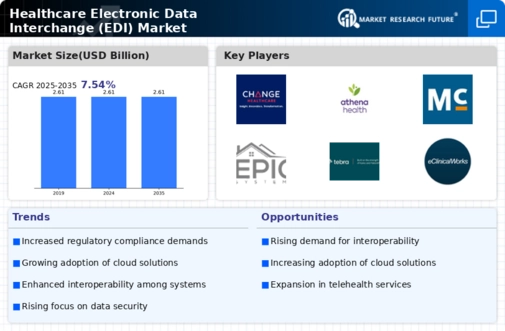
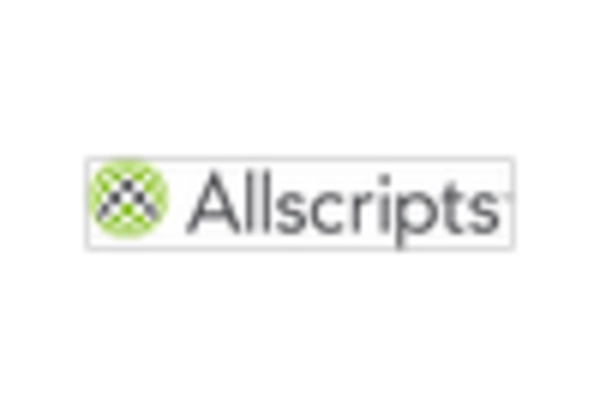
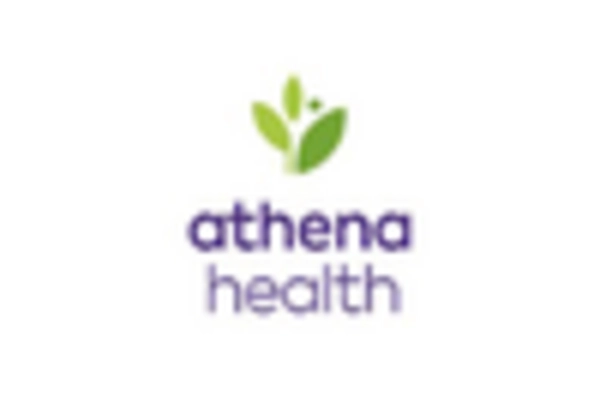
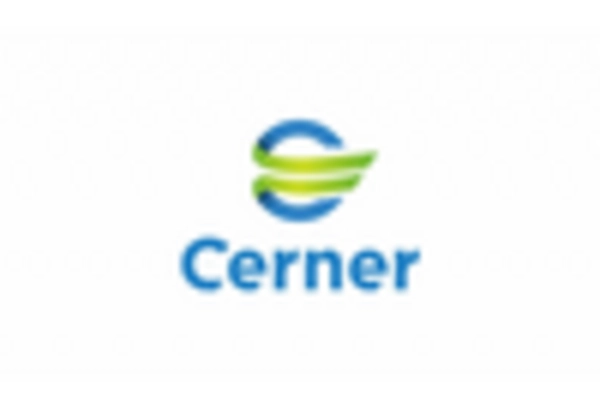
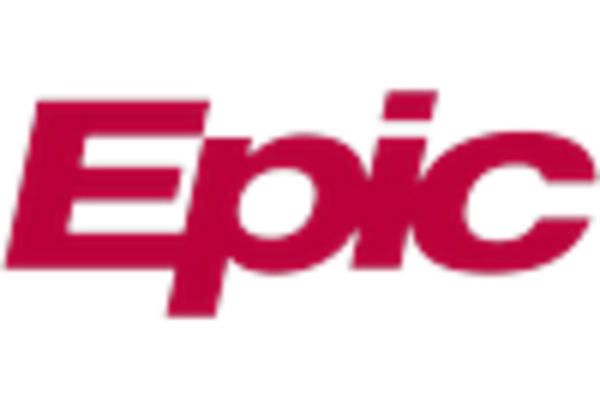
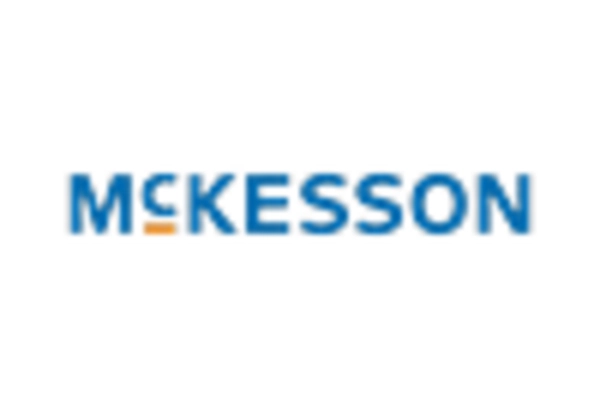
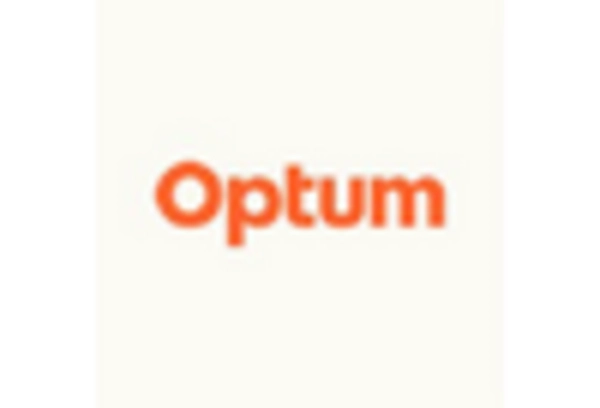









Leave a Comment